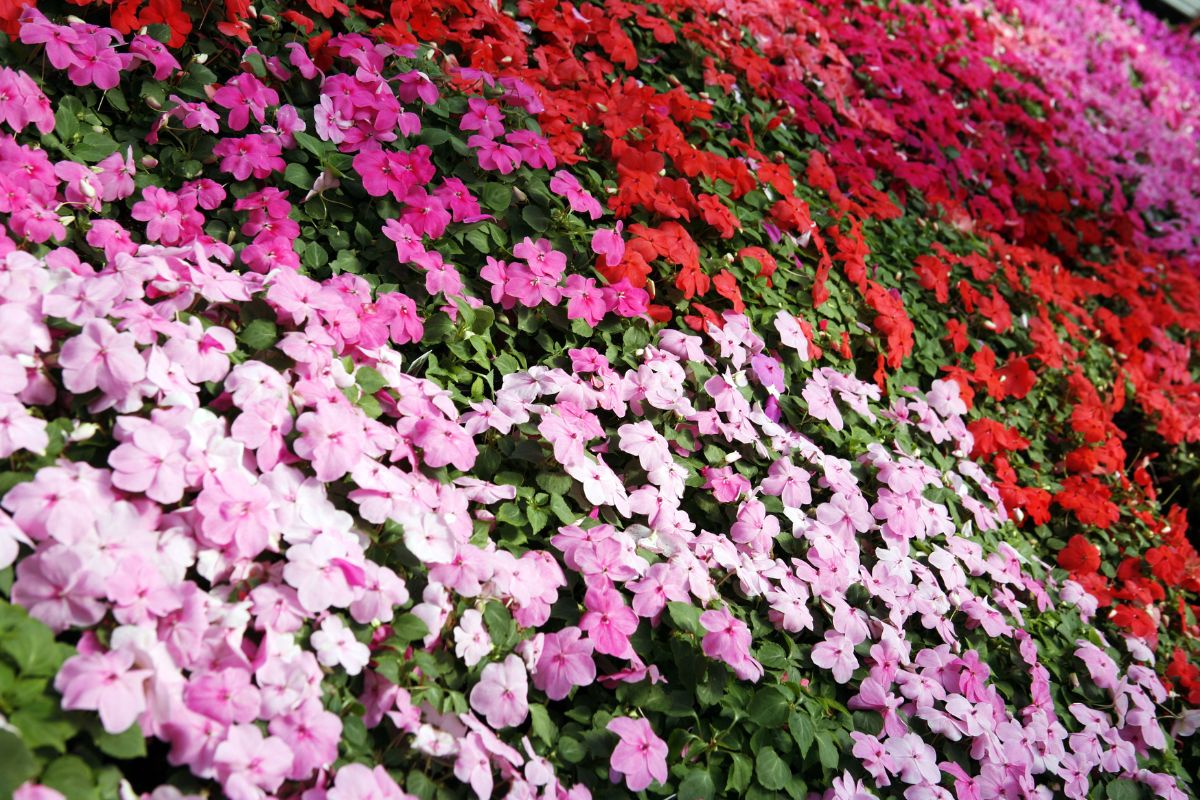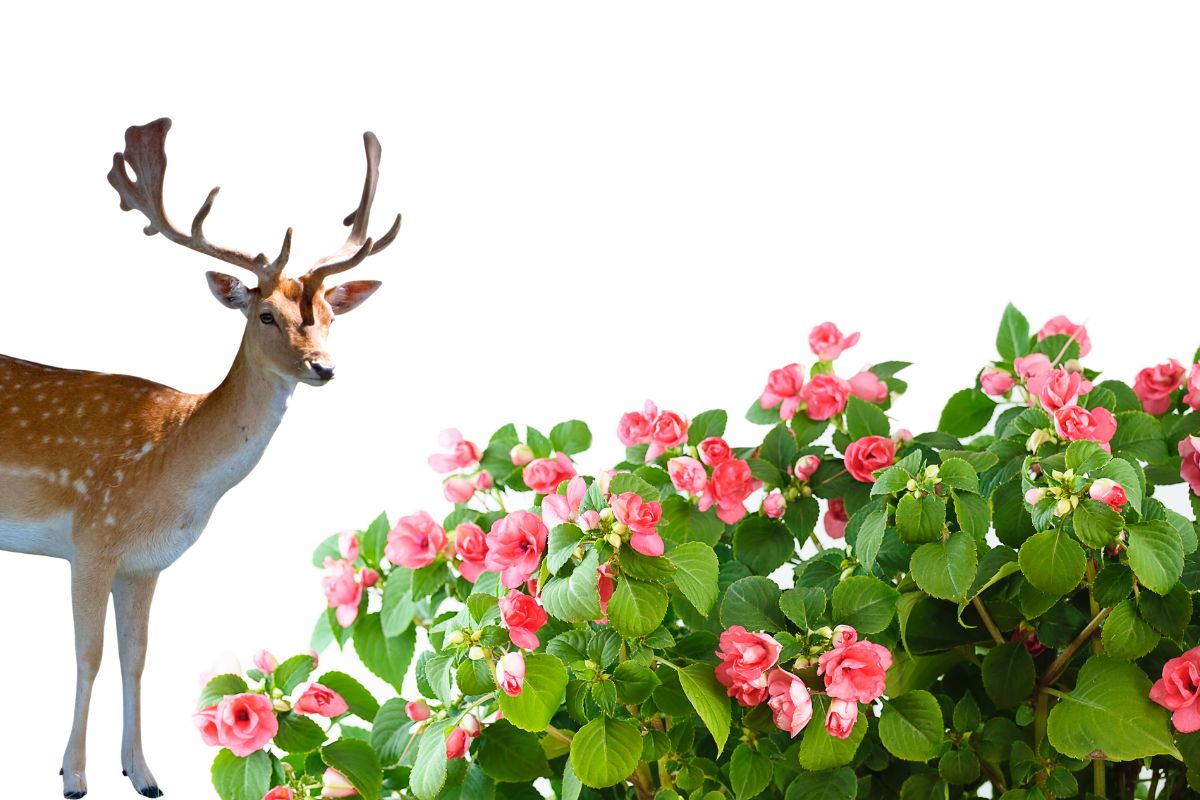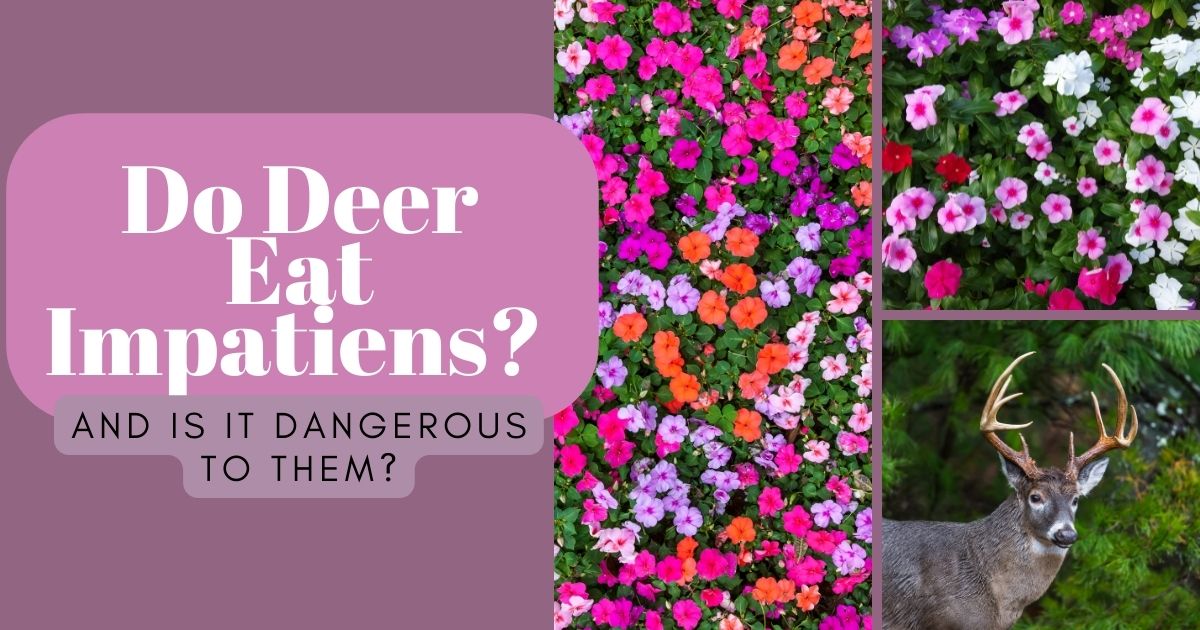Deer and Impatiens
While gardening is a profitable and fun hobby, there are obstacles to overcome. You need to ask yourself, do deer eat impatiens? It is crucial to understand this.
The secret to having a thriving garden is knowledge. Knowing whether impatiens are vulnerable to deer and how to safeguard them is important if you’re considering planting them. This article will provide you with important information on the deer and impatiens.

Do Deer Eat Impatiens?
Yes, deer consume impatiens. If you don’t safeguard these plants, they’ll destroy them immediately. Taking the appropriate precautions to protect your impatiens if you reside in a region where you encounter deer frequently is crucial.
Deer enjoy impatiens very much. Many animals avoid the plant. If you do not protect impatiens, a deer will destroy them all. Despite the plants’ beauty, deer rarely eat them.
How to Protect Your Impatiens Against Deer
You must learn how to protect your impatiens against deer. Even though deer may appear risk-free, if you allow them free reign in your garden, they may cause irreparable damage to the plants you hold dear. Impatiens (Impatiens spp.) are a favorite food of deer.
As a result, these lovely flowering annuals can sustain significant damage at the hands of these animals. You may take chemical and non-chemical approaches to prevent deer from eating your impatiens.
- To make it easier to monitor your impatiens, plant them close to home or where you can see them from a window. According to the Old Farmer’s Almanac, impatiens are wonderful additions to window boxes. It will improve the likelihood of catching deer.
- Plant flowers that deer won’t eat near the impatiens. These flowers may include the annual floss flower (Ageratum houstonianum) or the herb mint (Mentha spp.) Because deer rely so largely on their sense of smell, adding smelly plants can help discourage their presence.
- Place some plants deer won’t eat near your impatiens or at the entrance to the garden. This will help keep them away. You can plant thorny, hairy, or prickly foliage such as the perennials spider flower, lamb’s ear, and other perennials that deer won’t eat.
- Remove crops after harvesting, pluck fruits as soon as they are ready, and trim tall grasses and bushes to discourage deer from using the area as bedding. Maintaining a clean and orderly garden will make it less likely that deer will go into your property, ultimately keeping them away from the impatiens.
- To keep deer out of your garden, you can install wind chimes, a scarecrow, and bright motion-sensor lights. Deer are nervous and scared of new things, so this combination of deterrents should work. Move these things around every once in a while to keep the deer from becoming accustomed to them and to enhance the power they possess.
- The University of Vermont Extension recommends a fence height of 8 feet (2.4 meters) around the garden to prevent deer from gaining access to the impatiens. Because white-tailed deer can make height jumps of approximately 8 feet (2.4 meters), the fence must be at least this high.
Installing commercial heavyweight deer netting around the garden’s perimeter is another less expensive alternative. You can also consider planting shrubs deer won’t eat.
- Combine one part egg whites with four parts water, pour the mixture into a spray bottle and spritz the impatiens generously. Apply again after every 30 days. This egg-based remedy is impervious to the elements, and deer do not find it appealing.
- The University of Vermont Extension recommends mixing one part spicy sauce and sixteen parts water. Pour it into a spray bottle to saturate the impatiens. The hot sauce flavor is offensive to deer.
- On a day when the weather is dry, and the temperature is above freezing, apply a commercial contact repellent straight to the impatiens plants. Plants that you treat with contact repellents take on an unpleasant flavor, which drives deer away. Repellents are not effective and work best on plants deer do not favor.
Thus impatiens are not one of those plants. It is best to use a contact repellent with a secondary control method for optimal efficacy.
- When the weather is dry and the temperature is above freezing, apply a commercial area repellent around the impatiens. Area repellents generate an odor that deer find offensive, which drives them away from the treated area.
Area repellents, much like contact repellents, are most effective when used on plants that deer do not favor, so combining them with another technique of deer management is better.
A List of Things to Use When Protecting Impatiens From Deer
- Chimes for the wind
- Scarecrow
- Lights that detect movement
- Heavyweight deer netting
- Whites of eggs
- Can of spray paint
- Hot sauce
- Contact deer repellent
- Area deer repellent
Deer may get used to the smell of particular repellents. Utilize a variety of techniques during the growth season. There are dozens of home cures, some of which might work better for you than others.
Continue to put different approaches through their paces until you find the right balance of physical and chemical safeguards. Although it is an expensive solution, erecting a fence around your property or bushes that deer won’t eat is the surest way to stop deer from eating your impatiens.

Other Animals That Eat Impatiens
Unfortunately, animals other than deer also eat impatiens. Different kinds of ravenous animals might also decide to nibble on your plants. Understanding what they are and how to defend your impatiens against them is essential.
Your flowers may be in danger from rabbits, opossums, and insects. Each of them also needs a unique form of defense. Unexpectedly, barriers will not deter any of these creatures. Opossums are good climbers, rabbits can pass through fence gaps, and insects may readily fly over, climb over, or dig under fences.
Although netting can help protect your impatiens from opossums and rabbits, it cannot stop insects from harming them. Combine mesh with insect repellent to offer your flowers the best chance of success. Bonide-eight insect control for vegetable, fruit, and flower, insecticide/pesticide concentrate is one such repellent.
It takes a lot of work to plan and prepare a garden, so you want to ensure you do everything you can to safeguard your plants and give them the best chance of success. The best thing you can do to keep impatiens alive and secure is to understand what animals enjoy eating them and how to deter them from doing so.
Are Impatiens Harmful to Deer?
This is a question that many ask themselves. In particular, impatiens are not harmful to deer or other animals. Because of its fragility and lack of venom, animals can easily eat the plant. Deer and other animals adore impatiens plants.
Are impatiens deer resistant? Although some individuals believe impatiens are resistant to deer, this is untrue. In contrast to other vine-like plants, deer prefer impatiens. Surprisingly, Impatiens are the meal that deer love the most. They grow highly delicate, colorful, and lovely flowers. Everything, even the leaves, are edible.
Sunpatiens vs. Impatiens – The Difference
Although the two plants have a similar appearance and have names with similar tones, they differ greatly from one another. Impatiens and sunpatiens are hybrids. Because of this, the two have many similarities, such as the flower’s color contrast. However, below are the typical variations:
Light Requirements
Sunpatiens and impatiens have different light requirements. To begin with, impatiens don’t require a lot of sunlight for them to grow well. The plant thrives and grows happily in locations with minimal sunlight and shade. On the other hand, sunpatiens need a lot of sun to grow well. The plant is a sun-lover and requires lots of sunlight for its colors to develop fully.
Leaf Color
Sunpatiens and impatiens are different in terms of their leaf color. The leaves of impatiens are a paler shade of green. The sun might be the cause. However, this has no relation to the color of their flowers. Sunpaitens, on the other hand, typically have leaves that have a deeper tint.
Because of this, gardens tend to have more of this plant. The majority of homeowners favor this color.

The Final Say
We believe you now have all the important information you need on deer and impatiens.
Many animals, including deer, have these delicate flowering plants on their preferred foods list. They love the entire plant, including the bloom, stem, and root. These plants aren’t harmful.
Enjoy setting up your garden now that you know how to keep deer and other animals away from your impatiens. Hopefully, these straightforward tactics will give you a clear understanding of the steps you should take to guarantee your impatiens’ success.
